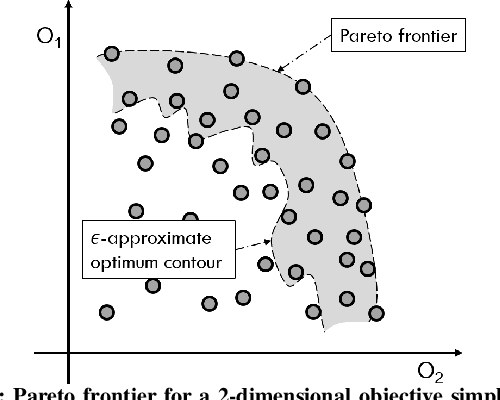Chien-Yi Yang
NN-Steiner: A Mixed Neural-algorithmic Approach for the Rectilinear Steiner Minimum Tree Problem
Dec 19, 2023Abstract:Recent years have witnessed rapid advances in the use of neural networks to solve combinatorial optimization problems. Nevertheless, designing the "right" neural model that can effectively handle a given optimization problem can be challenging, and often there is no theoretical understanding or justification of the resulting neural model. In this paper, we focus on the rectilinear Steiner minimum tree (RSMT) problem, which is of critical importance in IC layout design and as a result has attracted numerous heuristic approaches in the VLSI literature. Our contributions are two-fold. On the methodology front, we propose NN-Steiner, which is a novel mixed neural-algorithmic framework for computing RSMTs that leverages the celebrated PTAS algorithmic framework of Arora to solve this problem (and other geometric optimization problems). Our NN-Steiner replaces key algorithmic components within Arora's PTAS by suitable neural components. In particular, NN-Steiner only needs four neural network (NN) components that are called repeatedly within an algorithmic framework. Crucially, each of the four NN components is only of bounded size independent of input size, and thus easy to train. Furthermore, as the NN component is learning a generic algorithmic step, once learned, the resulting mixed neural-algorithmic framework generalizes to much larger instances not seen in training. Our NN-Steiner, to our best knowledge, is the first neural architecture of bounded size that has capacity to approximately solve RSMT (and variants). On the empirical front, we show how NN-Steiner can be implemented and demonstrate the effectiveness of our resulting approach, especially in terms of generalization, by comparing with state-of-the-art methods (both neural and non-neural based).
Flexible Multiple-Objective Reinforcement Learning for Chip Placement
Apr 13, 2022



Abstract:Recently, successful applications of reinforcement learning to chip placement have emerged. Pretrained models are necessary to improve efficiency and effectiveness. Currently, the weights of objective metrics (e.g., wirelength, congestion, and timing) are fixed during pretraining. However, fixed-weighed models cannot generate the diversity of placements required for engineers to accommodate changing requirements as they arise. This paper proposes flexible multiple-objective reinforcement learning (MORL) to support objective functions with inference-time variable weights using just a single pretrained model. Our macro placement results show that MORL can generate the Pareto frontier of multiple objectives effectively.
 Add to Chrome
Add to Chrome Add to Firefox
Add to Firefox Add to Edge
Add to Edge